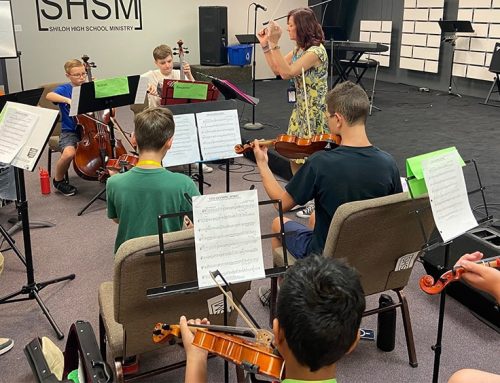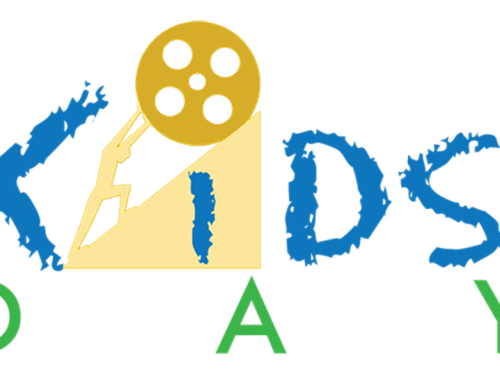By Cort Monroe, CCUSD Superintendent
On Tues., May 10, the Cave Creek Unified Governing Board unanimously adopted a resolution for a 15% maintenance and operation budget override election to be held on Nov. 8. I would like to answer questions to help educate people about the upcoming vote.
Q: What exactly would a successful passing of an override mean to the Cave Creek Unified School District?
A successful passing of an Override will be used to:
• Increase teacher and staff salaries to help CCUSD attract and retain qualified staff.
• Invest in career, technical, and vocational education, including computer science, engineering, coding, and JROTC.
• Support academic programs including Advanced Placement (AP), elementary enrichment programs, gifted/honors, International Baccalaureate (IB), and World Languages.
• Support student and staff safety.
• Maintain class sizes.
• Fund stipends for hard-to-fill positions and special education teachers.
• Reduce student fees, including athletics.
• Reduce the district’s need to eliminate effective programs and services to students and parents.
Q: How much of this override would be used on administration?
Zero. No override funds will be used for salaries of administrators.
Q: How do I know the money will be spent as indicated?
Arizona law is very specific in how school districts can spend the money they receive. The expenditures of the override will be presented to the governing board monthly and audited annually. A citizen oversight committee will be created to review override expenditures.
Q: How long is an override in effect?
The district’s M&O budget override election provides funding to the district for seven years. This additional funding would start in the 2023-2024 school year. Voters will be asked to reauthorize the override by the fifth year, or the district will receive reduced funding in year six and a further reduction of funding in year seven. After year seven, the override expires, and funding is reduced to zero if not reauthorized.
Q: Why is the district asking voters to approve an override when the state of Arizona increased funding for schools?
An override allows the district to offer competitive salaries to attract and retain highly qualified staff to serve our students. Currently, CCUSD teacher pay ranks in the bottom 15% compared to other Arizona school districts. CCUSD lags behind surrounding school districts competing for teachers and staff. Since all school districts will be receiving the increase in funding, this gap will still exist because almost every school district in Maricopa County has approved M&O override funds to pay their teachers and staff higher wages.
Q: What is a Maintenance and Operations budget override?
An M&O override seeks voter permission to exceed the “revenue control limit,” which is a spending limit set forth in the Arizona Constitution since 1980. This law allows school districts to ask voters for direct funding to supplement budget allocations from the state legislature. With approximately 85% of the maintenance and operations budget used for staff salaries and related benefit costs for the district’s employees, community support is necessary to offer competitive wages and maintain the excellent programs and services that CCUSD offers beyond the basic state standard.
Q: Do other school districts have a 15% M&O override in place?
There are 55 districts in Maricopa County, 48 districts currently have an M&O override in place. Out of the seven that do not have an override, six of them have under 760 students. Cave Creek Unified School District is the largest district in Maricopa County without an override – currently serving over 4,800 students.
Q: What is the difference between a bond and an M&O override?
Bonds allow the district additional funding to use for capital items, such as new buildings, additions to buildings, land, school buses, and renovations to buildings, furniture, equipment, and technology. An override is used for “people and programs.” They fund operational expenses including salaries, benefits, supplies, purchased services, utilities, and insurance. An override allows a district to exceed its budget limit up to 15%.
Q: Is the override a tax increase?
Yes. The override would be a $0.21 property tax increase, which would be $122 a year for a homeowner with a limited property value of $582,790 (the limited property value is the home value the county uses to assess the taxable value of a home).
Q: What happens if the M&O budget override is not approved?
If an override is not approved, the CCUSD will struggle to retain and attract highly qualified teachers and lose staff to surrounding school districts that can offer more competitive salaries. In addition, the district will have to consider the following:
• Closing a school.
• Redrawing attendance boundaries for our schools, which could include repurposing our schools.
• Reducing transportation options.
• Increasing class sizes.
• Increasing student fees.
• Reductions in operation and maintenance services.
• Reducing, adjusting, and potentially eliminating student programs.
Q: Many community members donate up to $400 to a school each year to obtain the Arizona tax credit. Why doesn’t the district just find new ways to get more people to donate?
By statute, tax credit monies must be used for extracurricular support for students. The district could not legally use it for regular expenditures such as new teachers, salaries, benefits, supplies, or utilities. Tax credit funding is important for providing out of school day opportunities for students, but it doesn’t provide more money for the district to spend.
Q: What is the district’s history of overrides?
The district last passed an override in 2007, which expired in 2014.
Q: How does Arizona fund schools?
Arizona funds its schools based on the number of students and the miles students are transported. It is formula-based funding.





